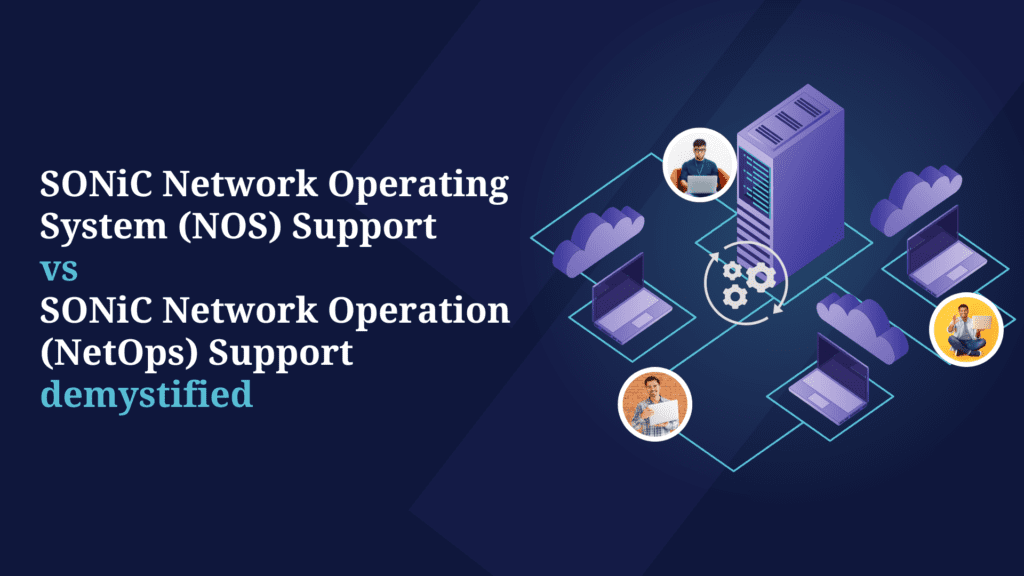The rise of generative AI frameworks based on large language models is transforming the dynamics of human-computer interactions within data-driven applications. Across various industry verticals, Copilots are being introduced to facilitate collaborative relationships between operators, practitioners, and decision-makers through interactive conversational prompts with intelligent systems. Networking is undergoing a similar transformation, given the evolution of data centers to meet the demands of advancing technology and the increased reliance on AI-driven computing. Enterprise and cloud data centers generate extensive operational and application data, offering significant visibility. Aviz envisions leveraging the capabilities of Large Language Models (LLMs) to distill this vast amount of data from Edge, Data Center, and Cloud Network Infrastructure into actionable business-driven summaries.
Network Copilot
Aviz Network Copilot stands as the industry’s pioneering vendor-agnostic Generative AI Solution, harnessing the capabilities of open-source Large Language Models (LLMs) to efficiently process, correlate, and simplify the intricate demands of networks. It is tailored for decision-makers, network research engineers, and data center operators. Network Copilot is driven by our ONES (Open Network Enterprise Suite) multi-vendor, multi-NOS data mobility platform, serving as the backend infrastructure for data ingestion, aggregation, and enrichment across diverse datasets, including Network State, Performance, and Application data.
Life Cycle: Bring AI to your Networks
Network Copilot brings a practical understanding of generative AI to every networking professional, fostering innovation in defining and customizing Large Language Models (LLMs) for their specific use cases within a multi-vendor ecosystem. This process ensures a tailored approach without compromising on operational efficiency and network security. The journey begins by outlining use cases, selecting the appropriate model, followed by training and tuning to align with contextual expectations, ultimately deploying with confidence.
Focused Use Cases
With Network data sets varying from hardware inventory to application visibility, our focus is geared towards the following critical use cases.
- Network Compliance: Providing insights and recommendations for compliance management tasks, the Copilot ensures that network devices align with business expectations. This covers aspects such as security compliance, resource utilization, and end-of-life hardware inventory. Administrators are promptly alerted to any deviations from best practices.
- Forecasting & Capacity Planning: Support the network architecture team in strategically forecasting and overseeing the resources needed to meet current and future demands on the network infrastructure. This ensures the data center network operates optimally, delivering performance, scalability, and efficiency.
- On-Demand Business Intelligence Analytics: Unlike traditional applications that come with pre-packaged analytics use cases, Network Copilot helps deliver ad-hoc business intelligence analytics that suit the spectrum of end users ranging from network practitioners on one hand to decision makers on the other hand.
- Insights on Network State Anomalies: Leveraging its generative AI capabilities, the copilot excels in identifying anomalous behavior within the network. This includes providing answers on unusual traffic spikes, deviations from normal usage, or potential security breaches.
- Troubleshooting & Optimization Assistance: Assist NetOps and support teams in streamlining troubleshooting and day-2 operations by providing extensive visibility into network state information and traffic flows. Identify areas of concern and suggest remedial actions to ensure compliance with established standards.
Network Copilot is Ready
Network Copilot offers a vendor-agnostic data platform, allowing customers to store and process network-generated and network-related data through standard interfaces. This establishes an optimal foundation for Copilot to seamlessly integrate Gen-AI into your networks.
Network Copilot is specialized in providing conversational insights into the operational state and compliance metrics derived from a diverse array of network switches within the organization’s network infrastructure. The real-time information gathered by the application at scale encompasses:
- Inventory: Static information about network devices and servers, including uptime, platform-specific or vendor-specific data, software versions (Network Operating System, Linux Distribution), number of operational ports and speed.
- Network Health: Time-series-based operational data, including the operational status of devices and links, platform or system resource utilization (CPU, memory, etc.).
- Network Traffic: Periodic percentage utilization of network bandwidth versus available bandwidth, traffic rate (packets/sec), drops due to network errors, congestion, and unintentional discards.
Copilot offers a Chat-GPT-like experience, delivering responses based on its extensive training. Users are empowered to save and export new questions tailored to specific customer use cases, fostering collaboration with the Aviz team to refine responses. Operating on a hybrid approach, combining fine-tuned and retrieval augmented generation (RAG), Copilot requires some supervision in context delivery. Users can dynamically load customer-specific context or business expectations into the application to enhance responses related to compliance. Network Copilot is adaptable and can be deployed as a standalone application on On-Prem, supporting commodity servers with NVIDIA GPUs for efficient responses, or as a service in the Cloud. See below for hardware and software requirements
| Deployment | Specification |
|---|---|
| On-Prem | Software: Ubuntu 22.04, Docker, NVIDIA CUDA 12 & Toolkit Inference on GPU: Min Recommended: 24GB RAM Supported Models: RTX 3090 | 24 GB, RTX 4090 | 24 GB, A4000 | 16 GB, A5000 | 24 GB, A6000 | 48 GB, V100 | 16 GB Inference on CPU: Min Recommended RAM: 128 GB DDR5 Supported Models: 4th Gen Intel Xeon (32 cores) or above (Recommended), Intel Core i9-13900K, Ryzen 9 5900x, AMD Ryzen Threadripper 3990X, Intel 3435x |
| Cloud | Instances GPU for Inference: Nvidia T4 GPU 16 GB, A10 GPU 24 GB |
More to Come…
Expand on Data Sets
- Network Performance: Network Copilot will enhance existing functionalities related to network performance metrics, offering conversational insights into the efficiency and reliability of networks in alignment with service level agreements (Network SLA). This encompasses datasets related to network latency, packet loss, and the reachability of services across the network.
- Application Compliance: Automated insights into application metrics will assist network practitioners in identifying primary application consumers and top talkers. It enables an understanding of the predictability of application-specific network usage, facilitating the detection of anomalies and security risks associated with application data. The datasets encompass application identification for both data center and mobile core networks.
- Cloud Ready: The Network Copilot model will undergo improvements to accommodate cloud network datasets, with a focus on application compliance, performance, and usage. This enhancement involves gathering diverse data through standardized APIs, logs, and importing from cloud storage
Improvise Model for Customers
As Network Copilot receives feedback from customers, the content—comprising network state, performance and application datasets, along with contextual feedback collected from various environments—will facilitate the refinement of pre-trained large language models and the persistence of custom models. This process enables domain adaptation and adjustment to the network supportability domain. Exploration of Unsupervised RAG Approaches at Scale: Initiatives will focus on delving into unsupervised, purely data-driven, multimodal retrieval of contextually relevant information from both internal and external sources, encompassing both static and dynamic data.




